 |
University of Stuttgart |
|
Title: Facilitating the Reproduction of Simulation Results Abstract: Guaranteeing the reproducibility of simulation results faces many technical challenges, mostly originating from complex software stacks and hardware architectures. In this talk, we present our measures for facilitating the reproduction of simulation results obtained with the open-source porous-media simulator Dumux. In particular, we would like to automate the steps from a local executable to a distributable web application with which the results can be reproduced and visualized. This includes the containerization of the underlying software stack, access to the required input data, selection and provision of a suitable backend, as well as the generation of the browser frontend. The current state of our efforts is illustrated by means of a recently performed benchmark study for flow and transport in fractured porous media. Bio: Bernd studied mathematics in Augsburg, Germany, and received a master's degree in mathematics from the Iowa State University in 2001. From 2001 to 2006, he was a doctoral student at the Institute of Applied Analysis and Numerical Simulation, University of Stuttgart. After his promotion, he turned to the engineering sciences and is currently associate professor at the Department of Hydromechanics and Modelling of Hydrosystems (LH2) in Stuttgart. His research interests encompass computational models for porous media flow, transport and deformation phenomena, model coupling and decoupling as well as advanced discretization and solution techniques. He coordinates the development of the open-source porous-media simulator Dumux. Bernd is also involved in several third-party funded research projects such as the Cluster of Excellence "Data-Integrated Simulation Science" (EXC 2075) and the Collaborative Research Centre "Interface-Driven Multi-Field Processes in Porous Media" (SFB 1313). |
|
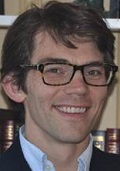 |
Virginia Polythechnic Institute and State University |
|
Title: Topology and its effects on fluid flow Abstract: Geometric structure plays an essential role in many transport processes. Within this context, topology provides a way to measure how material is connected within a system. In a multiphase flow, topological changes occur due to coalescence and snap-off events that fundamentally alter the fluid structure and behavior. These changes can be understood quantitatively based on geometric invariants, which include the Euler characteristic as a topological measure. This talk will consider topological changes in the context of geometric evolution. Geometric laws that constrain the possible shapes that an object can attain will be used to infer the relationship between geometric invariants. Noting that changes to the toplogy of an object occur as discrete events, the fundamental mechanisms that drive these changes will be considered in detail. The associated physical consequences will be examined from the molecular scale, the pore-scale, and the reservoir scale. Bio: James E. McClure is a Computational Scientist with Advanced Research Computing at Virginia Tech. His research focuses on averaging theory, multiphase flow, collective behavior and computational methods. A particular emphasis is devoted toward the development of software as a means to combine theory and large-scale computation with experimental image data. Previous work through the United States Department of Energy's INCITE program has focused on applications of digital rock physics using the world's largest supercomputers. McClure obtained his Ph.D. in Environmental Sciences and Engineering from the University of North Carolina at Chapel Hill. |
|
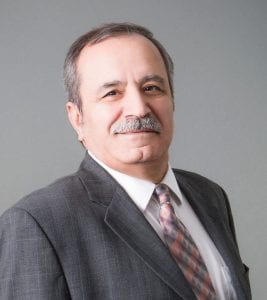 |
Muhammad Sahimi University of Southern California |
|
Title: Porous Media, Small and Large: From Atomistic Modeling of Nano-Porous Membranes to Modeling of Flow and Transport in Geological Formations Abstract: Flow, transport, reaction, adsorption and deformation (FTRAD) constitute a fascinating set of phenomena that occur in a wide variety of porous media and materials over widely disparate length scales, from molecular, to pore, core, and field scales. In this presentation four classes of fundamental problems are described and the approaches to their modeling are discussed. We first describe a process-based modeling of fabrication of a nano-porous membrane based on quantum mechanical calculations and molecular dynamics simulations. We then outline a general approach to modeling of adsorption and swelling of several types of core-scale porous materials. Next, the problem of reconstruction of porous materials and media based on limited data, such as their two- or three-dimensional images is described, and a new method based on curvelet transforms for speeding up simulation of the FTRAD in such images is discussed. Finally, the problem of upscaling from core to field scale is described and a multiresolution approach to the problem based on wavelet transformations is Bio: Muhammad Sahimi is Professor of Chemical Engineering and Materials Science, and the NIOC Chair in Petroleum Engineering at the University of Southern California in Los Angeles. He received his B.S. degree from the University of Tehran in 1977 and his Ph.D. from the University of Minnesota in 1984, both in chemical engineering. He joined USC in 1984, and was the Chair of his Department from 1999-2005. His research interests include flow, transport, reaction, adsorption and deformation in porous media, characterization of fracture network of rock, transport of fluid mixtures in membranes, and transport of fluids and macromolecules in nanostructured materials. |
|
 |
University of Hasselt and TU Delft |
|
Title: Modelling the behaviour of skin after deep tissue injury using poro- and morpho-elastic models Abstract: More than 12 million people per year get seriously injured as a result of burn accidents. About one million people per year die as a result of the consequences. Serious skin trauma is often accompanied with heavy scar formation and with the formation of contractures, which refer to skin contractions that are so severe that the patient is faced with disability. In order to improve the quality of life of patients, it is important to investigate the biological mechanisms behind the evolution of skin. Investigation of skin is done by clinical and in-vitro experiments, and by the formulation of hypotheses. To match theory to experiments, which come in as patterns and numbers, quantification of the developed theory is crucially important. Therefore, mathematical models help develop insight into the behaviour of skin after skin trauma. Skin mechanics is an important aspect of the formation of contraction. One of the important features is that deformations are plastic. In this talk, a morpho-elastic model will be presented, as well as the underlying mathematical and numerical issues to simulate skin mechanics. Furthermore, some results from poro-elasticity will be discussed. Since there are large patient-to-patient variations, uncertainty is an important aspect. In the talk, uncertainty aspects will also be dealt with using stochastic (partial) differential equations and stochastic processes. Bio: Fred Vermolen has obtained his PhD-degree at the Delft University of Technology in the analysis and modelling of vector-valued Stefan (moving boundary) problems with applications in metallurgy. Part of his PhD-work was done at the Max Planck Institute in Dusseldorf, Germany. His PhD-work was followed by a postdoc period at the Mathematics Centre in Amsterdam (CWI). Subsequently, he started working as an assistant and associate Professor at the Delft Institute of Applied Mathematics at the Delft University of Technology. Currently, Fred is active in several fields of Applied Mathematics, in which he predominantly works in modelling biomedical applications and porous media flows. The biomedical applications, he is working on, involve skin evolution after deep tissue injury, development of pressure ulcers, metastasis and growth of cancer (in particular skin and pancreatic cancer) using different mathematical frameworks. The mathematical frameworks are partial differential equations, particle (agent)-based models and cellular automata models. Stochastic processes are dealt with for fundamental small-scale processes such as cell proliferation (division), mutation, death and migration. |
|
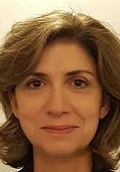 |
IFPEN |
|
Title: Multi-scale in-situ fluid monitoring to understand and model multiphase flow in porous media Abstract: Transport phenomena in porous media are encountered in many situations of practical and scientific interest, where determination of transport properties remains a challenging issue. They may concern natural porous media, such as soils, aquifers or hydrocarbon reservoirs, or artificial ones, such as filters, fuel cells, catalysts and concrete. Multiphase flow in natural porous media is essential in a wide range of phenomena and applications in geosciences, including hydrocarbon formation and migration, oil and gas production, enhanced oil recovery, underground energy or CO2 storage, water resources management or soil remediation. Understanding and predicting fluid displacement mechanisms at the relevant scale is one of the big challenges in basin and reservoir modeling. The description of the transport of fluids in geological formations relies upon advances on the characterization and modeling of natural systems in a large spectrum of time and length scales. The complexity of transport processes in these systems is due to the natural complexity and heterogeneity of geological structures as well as to the dynamics of the multiphase fluid displacement and its coupling with mechanical, thermal, chemical and biological processes. Information on the pore space geometry and topology and on fluid displacement is essential to understanding of mechanisms and modeling. In 2D, micromodel experiments and advances in microfluidics bring qualitative and quantitative information on the motion of fluid/fluid interfaces in model systems down to the micron scale. In 3D, X-Ray 3D-imaging has proved to be a key technology to study multiphase flow in porous media with a continuous quest for space and time resolution. Experimental observation has to be intimately linked to pertinent theoretical modeling taking into account the relevant physics of the studied phenomena at the right scale. Advances in molecular dynamics, lattice-Boltzmann or pore-network modeling methods combined to upscaling considerations permit to simulate complex flow regimes and to run laboratory and numerical experiments on comparable sample volumes. Through selected examples, on the combination of experimental observation and theoretical analysis at different scales, we demonstrate the necessity of adapting space and time scale to the studied phenomenon, and the complementarity of different methods to investigate multiphase flow in porous media. Bio: Olga Vizika is Geosciences Director at IFP Energies Nouvelles since 2013. She holds a Chemical Engineering Diploma and a PhD degree in Chemical Engineering, from the University of Patras, Greece. She has authored or co-authored more than 85 conference papers and 40 papers in peer reviewed journals on various aspects of multiphase flow in porous media, from the experimental investigation and modeling of transport properties of various 3-phase processes (gravity drainage, gas injection processes, Water Alternate Gas processes, gas condensate, CO2 geological storage) to the study of the effects of microstructure and heterogeneities at different scales on the displacement mechanisms and macroscopic flow properties of sandstones and carbonates. She is the recipient of 2018 Darcy Award of the Society of Core Analysts. |
|
 |
Inria Paris |
|
Title: A posteriori error estimates and adaptive solvers for porous media flows Abstract: Numerical simulation of porous media flows is a domain of permanently increasing importance. But can we assess how large is the error between the predicted numerical result and the unknown solution? And could the same precision be achieved faster? I will present some answers to these questions for several model porous media flow problems, starting from the steady linear single-phase Darcy flow, passing through problems involving reaction, advection, nonlinearities, degeneracies, or thermal effects, and ending with multi-phase multi-compositional flows with phase change. Guaranteed and fully computable bounds are obtained for the simpler problems, both for error in some energy norm or for error in a quantity of interest. A unified framework covering common discretization schemes (finite elements, finite volumes, discontinuous Galerkin) is presented, general polygonal/polyhedral meshes are discussed, and cheap implementations of the estimates are addressed. For all models, different error components are distinguished such as space discretization, time discretization, linearization, or algebraic. Then adaptive stopping and balancing criteria are designed which allow to invest the computational effort where needed and considerably speed-up simulations for the given relative precision target. Bio: Martin Vohralik is a Senior researcher at Inria, the French national institute for informatics and mathematics. He is the leader of the research team SERENA (Simulation for the Environment: Reliable and Efficient Numerical Algorithms). He works on numerical discretizations of partial differential equations and specializes in a posteriori error estimates and adaptivity. His particular interests are the reliability of the overall numerical simulation process and efficient use of computational resources, often for porous media applications. Martin Vohralík received his Ph.D. in 2004 simultaneously at the Czech Technical University in Prague and the University of Paris-South, Orsay, France and later worked as associate professor at the Sorbonne University in Paris. He had the occasion to (co)-supervise a dozen of Ph.D. and post-doc positions and served as a member of several international conference committees; he also currently serves on editorial boards of Acta Polytechnica, Applications of Mathematics, and SIAM Journal on Numerical Analysis. He has published over 60 peer-reviewed papers. In 2015, he earned the prestigious ERC consolidator grant. |
|
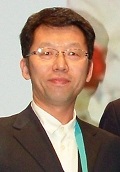 |
Tsinghua University |
|
Title: Electrokinetic and ion transport in micro/nanoporous media Abstract: Ion transport is ubiquitous in aqueous environments in biological, geological, chemical and environmental systems. Electrokinetics plays a very important and key role in some special cases where pore size is comparable to the screening length of electrical double layer. The applications include tight oil/gas exploration and development, radiative waste disposal, high-quality water purification, and even ion channels in cells. This talk will present (1) electrokinetic and interface theories for ion transport in micro/nanoporous media; (2) a mesoscopic numerical framework for predictions and the validations by comparisons with theories and experimental data; (3) multiscale analysis in both spacial and temporal scales for special applications. Bio: Moran Wang is a Professor at Department of Engineering Mechanics of Tsinghua University. After receiving his PhD degree in 2004 from Tsinghua University, he joined the Johns Hopkins University (2004-2006) and University of California (2006-2008) of USA as a postdoctoral fellow. He worked in Los Alamos National Laboratory as an Oppenheimer Fellow from 2008 to 2011, and then joined Tsinghua University as a full professor. He is working on microscale fluid mechanics and thermophysics in porous media. He has authored over 150 peer-reviewed papers on international journals which gained over 7000 times citations based on Google Scholar Reports (H-index: 45). Prof. Wang has been serving as editorial board members for several international journals including “Transport in Porous Media”, “Journal of Porous Media”, “Journal of Geophysical Research-Solid Earth”, “Journal of Fluid Engineering-ASME” and so on. He has delivered over 20 invited talks and been invited to contribute comprehensive reviews on “Physics Reports”, “Surface Science Reports”, “Material Science and Engineering R: Reports”, “Progress in Materials Science”, “Nano Today” and so on. He won the Interpore P&G Award for Porous Media Research in 2019. |
|
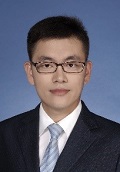 |
Shanghai Jiao Tong University |
|
Title: Coupling free flow and porous-media flow, and its applications to aerospace and mechanical engineering Abstract: The coupling of free flow and porous media flow is extensively involved in technical, environmental, and biological systems. In the first part of the talk, I will present the fundamental research with respect to the momentum transfer characteristics at the coupling interface. Then in the second part, I will talk about the roles of this coupling effect in three specific applications from the field of aerospace and mechanical engineering, namely vapor chamber heat-transfer system, transpiration cooling technology, and propellant acquisition device. The coupled free/porous media flows have also found to be often indivisible with turbulence, heat transfer, and phase change. Progress of the parameter optimization studies conducted by our group for the above mentioned applications will also be presented. Bio: Guang Yang is an Assistant Professor at School of Mechanical Engineering, Shanghai Jiao Tong University (SJTU). He earned his Bachelor’s degree from Tianjin University in 2011, and Ph.D. from Shanghai Jiao Tong University in 2016. Before joining SJTU, he was a postdoctoral research associate in Institute of Aerospace Thermodynamics, University of Stuttgart. His research interests include heat and mass transfer, transport in porous media, interface phenomenon, aerospace thermal sciences, etc. He has published over 30 peer-reviewed journal papers and 6 patents. |
|
 |
Lilit Yeghiazarian |
|
Title: HydroGrid: Emerging Technologies for Global Water Quality and Sustainability Abstract: Water problems cannot be solved piece-meal, one issue at a time. Rather, a holistic, systems-based approach is needed to manage the global water system sustainably. This talk will introduce the concept of the HydroGrid as a framework to describe connected water systems that encompass surface water and groundwater, the natural environment and built infrastructure. Drawing upon the knowledge and engineering experience employed in electrical grid operations, we outline mirroring concepts in the HydroGrid, with a particular focus on monitoring, analysis, and control of water quality. We will discuss emerging technologies in advanced materials, porous media design and modeling, signal transduction and wireless communications that enable development of autonomous mobile devices for dynamic water quality monitoring. As this technology matures, the devices will have the capability to stream real-time or near-real-time data for analysis with stochastic models of contaminant fate and transport. Modeling results, combined with controllability analysis of water systems, can then be used to determine system-wide prevention and mitigation strategies. Progress is measured with probability-based metrics of HydroGrid sustainability such as reliability, vulnerability, and resilience. Bio: Dr. Yeghiazarian is an Associate Professor of Chemical and Environmental Engineering at the University of Cincinnati. She holds degrees in electrical and industrial engineering from the Polytechnic Institute and the American University of Armenia. Dr. Yeghiazarian obtained her Ph.D. from Cornell’s Department of Biological and Environmental Engineering for her work on microbial dynamics in complex environmental systems. She studied active polymer materials at Cornell’s Department of Materials Science and Engineering as a postdoctoral fellow. Dr. Yeghiazarian is a recipient of numerous awards, including the Faculty Early Career Development Award (CAREER) from NSF, the Ruth Kirschstein award from NIH, the InterPore Rosette Award from the International Society for Porous Media, and most recently the Convergence Accelerator Award on Urban Flooding from NSF. Her research portfolio covers topics ranging from watershed processes, sustainability and environmental sensing to porous media and multifunctional materials. |
|
 |
Stéphane Zaleski Sorbonne Université (France) |
|
Title: Contact line motion using the Volume of Fluid method Abstract: Wettability, contact line dynamics and surface tension are essential in the pore scale motion of interfaces. Since it is difficult to resolve numerically the small interface thickness a sharp interface model seems the only practical solution. However in the context of this sharp interface model Huh and Scriven wrote “not even Herakles could sink a solid if the physical model were entirely valid”. The resolution of this paradox has occupied a large number of investigators, however a popular fix is to assume a Navier boundary condition for the tangential fluid velocity on the solid surface, which introduces a slip length l. We discuss the performance of such slip length models in various regimes. The sharp interface model is implemented using a Volume Of Fluid (VOF) method in the context of several free codes developed at d’Alembert Institute of Sorbonne Université and the FLOW lab at KTH. The results are compared to experiments and molecular dynamic simulations. Bio: Stéphane Zaleski is Professor at Sorbonne Université. After his doctorate at Ecole Normale Supérieure (ENS) in Paris and early years at the Physics Laboratory of ENS he joined the Mechanics group at UPMC – Paris 6. He investigates numerical methods for multiphase flow with applications to atomization, cavitation, porous media flow, boiling, hydrometallurgy, contact lines and droplet impact, including several variants of the Volume of Fluid method, the diffuse interface method and molecular dynamics. He has written several computer codes for the simulation of two-phase flow including PARIS Simulator (with D. Fuster, Y. Ling, R. Scardovelli and G. Tryggvason). Recently he applied these techniques to the study of Covid-19 airborne transmission by micron sized droplets. He is Associate Editor of J. Comput. Phys. and of Computers and Fluids. He is the recipient of an ERC award (2020-2025) and a member of the Institut Universitaire de France for the 2020-2025 period. |
|

